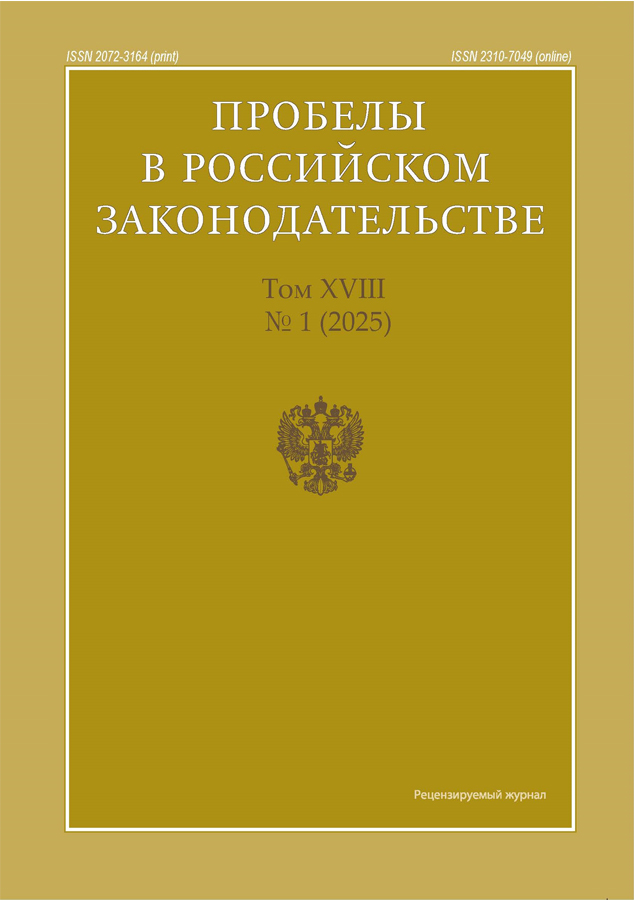Актуальные вопросы подготовки начинающих водителей
- Авторы: Тарасов А.Ю.1, Тарасова И.А.1
-
Учреждения:
- Московский университет Министерства внутренних дел Российской Федерации имени В. Я. Кикотя
- Выпуск: Том 18, № 1 (2025)
- Страницы: 33-37
- Раздел: Теоретико-исторические правовые науки
- URL: https://journals.eco-vector.com/2072-3164/article/view/677693
- EDN: https://elibrary.ru/XSXKNQ
- ID: 677693
Цитировать
Аннотация
Целью статьи является изучение взаимосвязи использования при подготовке кандидатов в водители высокотехнологических тренажеров и результатов сдачи экзаменов на право управления транспортными средствами.
В статье рассматривается связь между работой на симуляторе и результатами экзаменов по вождению — актуальная тема для тех, кто занимается подготовкой водителей и индустрией виртуальной реальности. Эта статья дает новое представление об индивидуальных различиях в поведении молодых водителей. Тренажеры все шире используются для обучения водителей, что дает возможность собирать объективные данные о квалификации водителей в стандартизированных условиях.
Однако относительно мало известно о том, как навыки, получаемые на тренажере для начинающих водителей, связаны с вождением по дорогам. В данном исследовании предлагается теоретическая основа, позволяющая количественно оценить квалификацию водителя с точки зрения скорости выполнения задач, нарушений и ошибок.
Ключевые слова
Полный текст
Об авторах
Александр Юрьевич Тарасов
Московский университет Министерства внутренних дел Российской Федерации имени В. Я. Кикотя
Автор, ответственный за переписку.
Email: 7137355@gmail.com
SPIN-код: 1693-4387
канд. юрид. наук, доцент, начальник кафедры организации деятельности подразделений по обеспечению безопасности дорожного движения, Московский областной филиал
Россия, МоскваИрина Анатольевна Тарасова
Московский университет Министерства внутренних дел Российской Федерации имени В. Я. Кикотя
Email: tarasovairina2@rambler.ru
SPIN-код: 4185-0419
канд. юрид. наук, доцент, доцент кафедры государственных и гражданско-правовых дисциплин, Московский областной филиал
Россия, МоскваСписок литературы
- Аллен Р. В. и др. Эффект симулятора вождения приверженность эффективности обучения // Материалы конференции по симуляции вождения в Северной Америке. — Айова Сити, 2007. [Электронный ресурс]. — URL: http://www.nads.sc.uiowa.edu (дата обращения 09.01.2025 г.).
- Бойдстан Л. Е., Кессель Д. С. и Миллер Дж. М. Оценка навыков вождения лиц с нарушениями восприятия на симуляторе вождения // Материалы 24-го ежегодного собрания Общества человеческого фактора. — Санта-Моника, Калифорния, 2020.
- Долс Дж. Ф. и др. Тренерский проект: новая программа подготовки водителей на тренажере. Первый международный симпозиум по человеческому фактору в оценке, обучении и проектировании транспортных средств водителей. — Айова: Университет Айовы, 2021.
- Де Винтер и др. Нарушения и ошибки при обучении водителей на основе симуляций. — Эргономика, 2017.
- Лаюнен Т., Суммала Х. Опыт вождения, личность, а также навыки и мотивы безопасности в самооценках водителей. Личность и индивидуальные различия, 2021.
- Фишер Д. Л., Поллацек А. П. и Прадхан А. Что может научить начинающих водителей искать информацию, которая снизит вероятность попадания в аварию? Профилактика травм, 2016.
Дополнительные файлы









